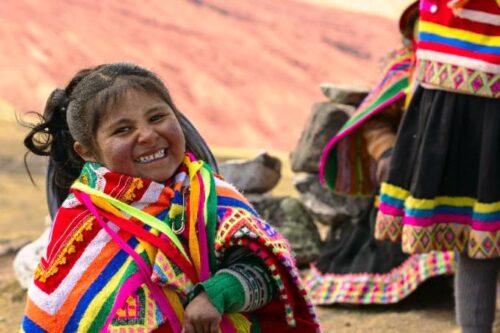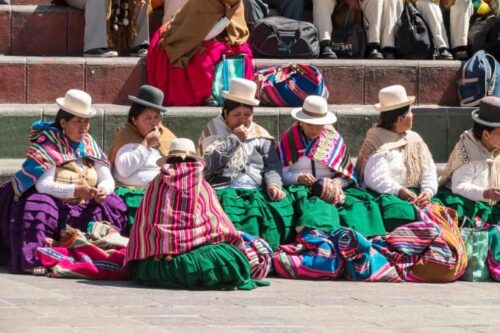Sara Raymi. Feast of the Sun, Andean New Year’s Day.
On 21 June, the winter solstice in the southern hemisphere, Andean cultures celebrate the new year. Fire, music, fruit and corn are the symbols. And open palms to thank and welcome.
On 21 June, the winter solstice, Andean cultures celebrate the beginning of a new year, 5531. In Cochabamba-Bolivia, in the province of Quillacollo, the celebration has a particular meaning, because it recalls the festival of corn, Sara Raymi and dates back to pre-colonial-Inca times. On the rocky hill, there are the Qolcas, built of mud with a thatched roof whose shape and position made it possible to preserve cereals, mainly corn, for a long time in order to guarantee food for the population. The hill is, therefore, the ritual space where the preciousness of the sun is celebrated and thanks are rendered to Tayta Dios, God the Father, for the renewal of the energy it releases.
The ritual begins on the night of June 20, when different groups of people gather to accompany the dawn and ends when the sun shines its first rays at the dawn of the new day. There are numerous components of the ritual but we mention only five: bonfires, music, fruit offerings, hands with open palms and corn.

123rf
The night of June 20 is considered the coldest of the year and, the people gathered on the hill light bonfires to warm themselves and, at the same time, to protect the sun that is rising with the new day and fight against the intense cold. The musical groups, mainly sikuris, with their wind instruments, accompany the people who dance around the bonfires in an atmosphere of expectation reminiscent of the Easter vigil.
When the colours of the sky announce that the sun is about to rise, someplace on the bonfire their offerings of apples, pears, honey, flowers, grapes accompanied by coca leaves and a few drops of alcohol poured on the ground. In this way, they give thanks for what they received the previous year, ask forgiveness from the earth and welcome the return of the sun.
When the cold and the colours of the sky intensify, the noise and the music cease and a contemplative silence fall: all eyes are turned to the east where the sun rises and the participants stretch out their hands with open palms to receive the energy of the first rays while, with strongly beating hearts, they beg for health for their bodies and an abundance of food for the community.

Women in traditional clothes in the square San Francisco in La Paz, Bolivia. 123rf
This divine time of encounter between the human being and the cosmos expressed by the rays of the rising sun closes with embraces and good wishes, while the music of the sikuris becomes stronger and more joyful. With the light of day, stalls offering food based on ancestral corn recipes appear, while some elderly women offer other varieties of corn not present in the market.
Thus, with the experience of co-care between human beings, the cosmos and the simplicity of corn, which reminds us that we are seeds to blossom and bear fruit in this life and a new year begins. (Photo 123rf)
Tania Ávila Meneses



